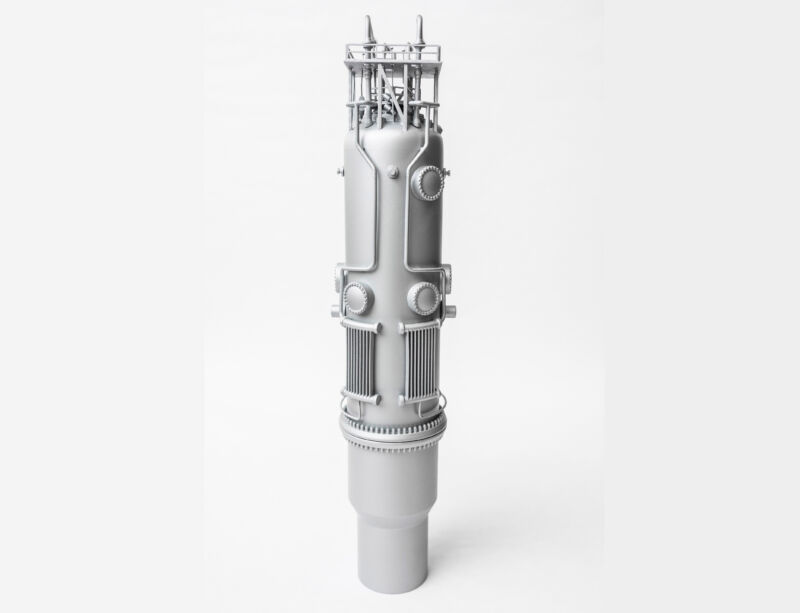
On Friday, the Nuclear Regulatory Commission (NRC) announced that it would be issuing a certification to a new nuclear reactor design, making it just the seventh that has been approved for use in the US. But in some ways, it's a first: The design, from a company called NuScale, is a small modular reactor that can be constructed at a central facility and then moved to the site where it will be operated.
The move was expected after the design received an OK during its final safety evaluation in 2020.
Small modular reactors have been promoted as avoiding many of the problems that have made large nuclear plants exceedingly expensive to build. They're small enough that they can be assembled on a factory floor and then shipped to the site where they will operate, eliminating many of the challenges of custom on-site construction. In addition, they're structured in a way to allow passive safety, where no operator actions are necessary to shut the reactor down if problems occur.
Many of the small modular designs involve different technology from traditional reactors, such as the use of molten uranium salts as the reactor fuel. NuScale has a much more traditional design, with fuel and control rods and energy transported through boiling water. Its operator-free safety features include setting the entire reactor in a large pool of water, control rods that are inserted into the reactor by gravity in the case of a power cut, and convection-driven cooling from an external water source.
NuScale started the certification process in 2016. According to the NRC, that process required the company to submit technical information that allows the Commission to evaluate it as follows:
Applications must closely analyze the design's appropriate response to accidents or natural events. Applications must also lay out the inspections, tests, analyses and acceptance criteria that will verify the construction of key design features. In addition, the NRC also requires design certification applicants to assess how the designs protect the reactor and spent fuel pool from the effects of a large commercial aircraft impact.
Once complete, the certification is published in the Federal Register, allowing the design to be used in the US. Friday's announcement says that the NRC is all set to take the publication step.
The NRC will still have to weigh in on the sites where any of these reactors are deployed. Currently, one such site is in the works: a project called the Carbon Free Power Project, which will be situated at Idaho National Lab. That's expected to be operational in 2030 but has been facing some financial uncertainty. Utilities that might use the power produced there have grown hesitant to commit money to the project.
reader comments
775